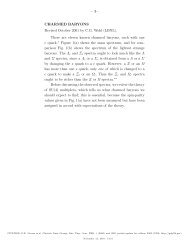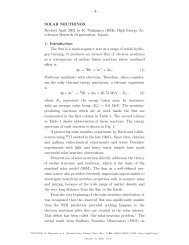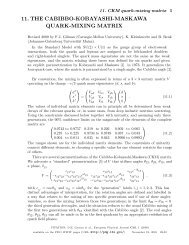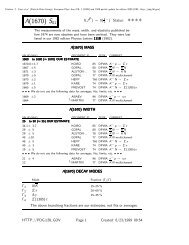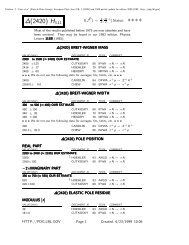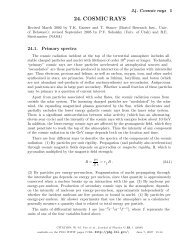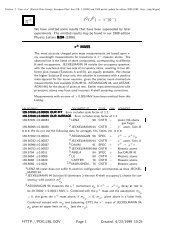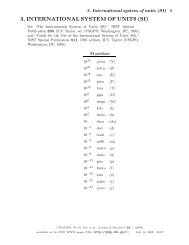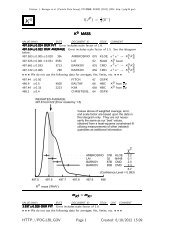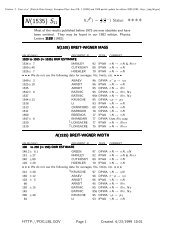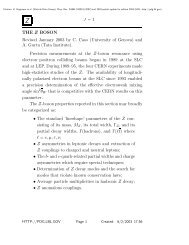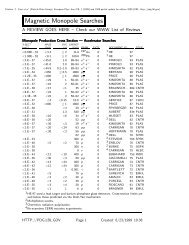You also want an ePaper? Increase the reach of your titles
YUMPU automatically turns print PDFs into web optimized ePapers that Google loves.
Review of <strong>Particle</strong> Physics: C. Caso et al. (<strong>Particle</strong> <strong>Data</strong> <strong>Group</strong>), European Physical Journal C3, 1 (1998)<br />
ACP(K 0 S φ)in<strong>D0</strong> ,<strong>D0</strong>→ K0 Sφ ACP(K 0 S φ)in<strong>D0</strong> ,<strong>D0</strong>→ K0 Sφ ACP(K 0 S φ)in<strong>D0</strong> ,<strong>D0</strong>→ K0 Sφ ACP(K 0 S φ)in<strong>D0</strong> ,<strong>D0</strong>→ K0 Sφ This is the difference between <strong>D0</strong> and <strong>D0</strong> partial widths for these modes divided by<br />
the sum of the widths. The <strong>D0</strong> and <strong>D0</strong> are distinguished by the charge of the parent<br />
D∗ : D∗+ → <strong>D0</strong> π + and D∗− → <strong>D0</strong> π− .<br />
VALUE DOCUMENT ID TECN COMMENT<br />
−0.028±0.094 BARTELT 95 CLE2 −0.182



